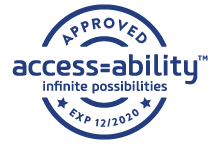According to the Centers for Disease Control and Prevention (CDC), one in four people in the United States has a disability and “may rely on digital accessibility to participate in virtual spaces or engage in everyday tasks.” Information and communication technology (ICT), including the use of digital devices and documents, websites, virtual meeting platforms, and more, are used increasingly to communicate with friends, family, and co-workers, form social connections, pay bills, conduct business, and “interact with government services.” However, people with disabilities may experience issues related to “digital inequality,” limiting their access to health care, education, and government websites. To address these issues, a new practical report has been released by the Employer Assistance and Resource Network (EARN) of the U.S. Department of Labor’s Office of Disability Employment Policy (ODEP). “Supporting Digital Accessibility in the Public and Private Sectors,” a research-to-practice brief, provides summaries of key current issues and “describes suggested strategies for employers seeking to implement digital accessibility policies and practices in their organizations.” Improvements in accessible ICT help to recruit, retain, and support workers with disabilities and can also “improve work processes and satisfaction for all staff.” To maximize the benefits of digital offerings, the report concludes that employers need to prioritize digital accessibility, train ICT professionals, and adopt policies and standards “to achieve this goal.” To learn more, visit the EARN webpage on Supporting Digital Accessibility in the Public and Private Sectors and read the full PDF document here.

